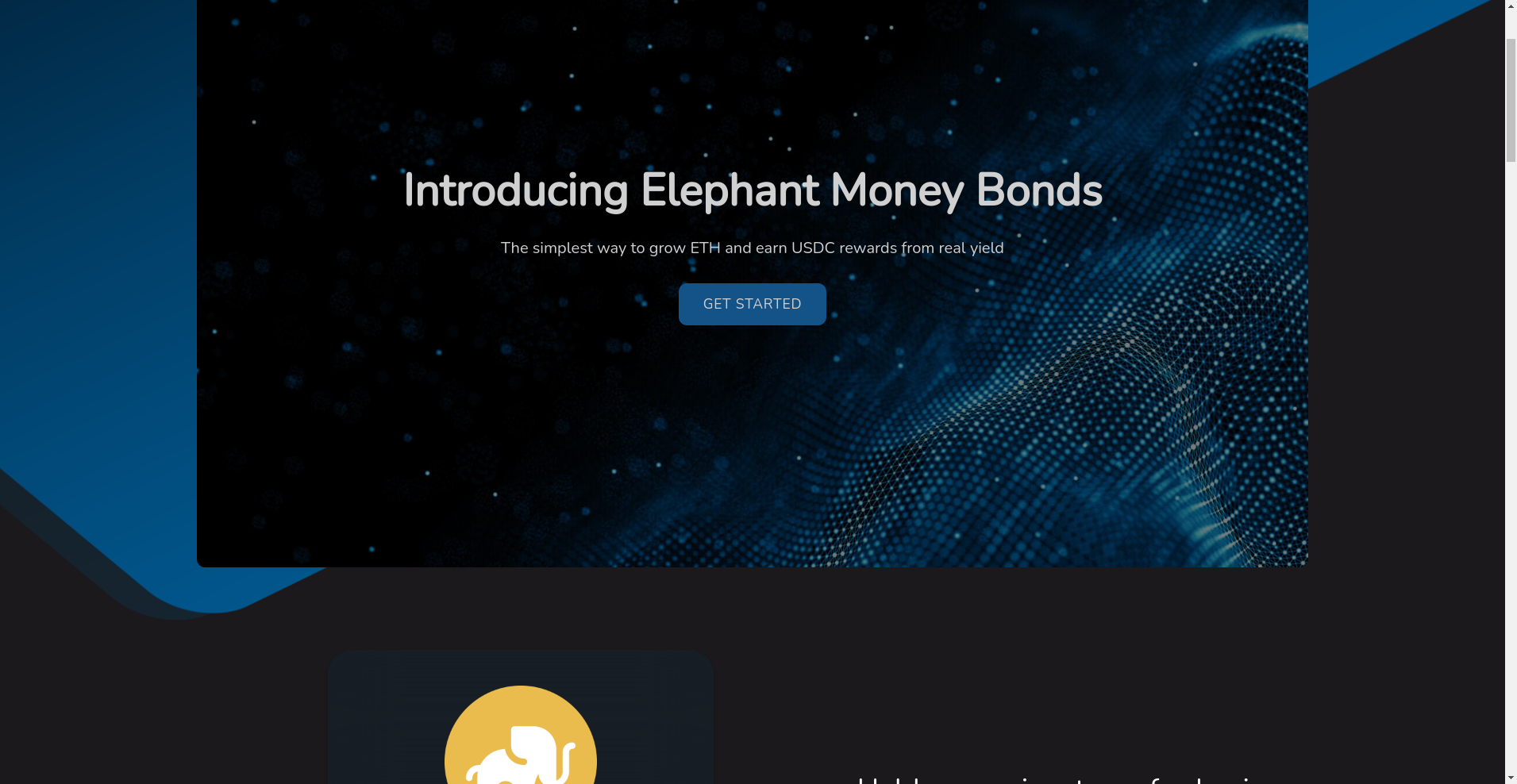Elephant Money ($ELEPHANT) Review: A Data-Driven Assessment of Its Legitimacy and Risks

What Is Elephant Money: An Introduction
Elephant Money is positioned as a decentralized community bank built primarily on the Binance Smart Chain (BSC). It claims to be the first of its kind—a permissionless, community-driven ecosystem designed to facilitate wealth accumulation through yield and price appreciation. With its promise of a "sports car with a turbocharged engine," the project emphasizes passive income, stability, and long-term value growth, leveraging a suite of tokens and innovative mechanics.
This review provides an impartial, evidence-based analysis of Elephant Money’s core features, security posture, tokenomics, ecosystem activity, and overall risks. While the project portrays itself as a complete and robust platform, an adversarial perspective helps trace potential vulnerabilities and evaluate its real-time legitimacy. Understanding the underlying deflationary stable-utility token (TRUNK) is key to grasping its economic model.
Team and Roadmap Evaluation
The publicly available information positions Elephant Money as a community-centric initiative with no clear details about the core development team. The absence of known founders or transparent leadership suggests an opaque structure, which can heighten risk and complicate trustworthiness. The project’s strategy relies heavily on community participation, decentralized governance via DAO, and partnerships with well-known audit firms.
Key milestones from their roadmap, as pieced together from various summaries, include:
- Launch and initial token distribution, including large burn mechanisms (49% to a "graveyard")
- Security audits conducted by reputed firms (Certik, Solidity Finance, PeckShield)
While these milestones reflect a structured plan, there is little public evidence of ongoing delivery beyond audit reports and community disclosures. The credibility of the team and their ability to meet future promises remain uncertain, especially given the complex, multi-layered ecosystem with numerous smart contracts. Exploring community-driven DAO governance is crucial when evaluating such a project.
Assessing the Security and Integrity of Elephant Money
The foundation of trust in any DeFi project hinges on robust security. According to the Cer.live audit report, Elephant Money's smart contracts have been publicly audited by multiple firms, including PeckShield, Solidity Finance, and Certik. The shared audit links indicate that development has at least undergone formal review, a critical step toward legitimacy. Learning about strategies for defending against smart contract exploits is vital in this context.
Analysis of the audit data reveals:
- Audit Coverage: Approximately 80% of the contract code was covered in audits, leaving room for potential undiscovered vulnerabilities.
- Incidents and Bugs: The reports mention "incidents" and "bug bounties" are not active, suggesting that, although audits passed, vulnerabilities may still exist or have been found previously.
- Insurance: No formal insurance mechanisms are indicated, which could expose users to risks if vulnerabilities are exploited.
- Technical Vulnerabilities: While the audits claim to identify common security flaws, the complex inter-contract architecture increases the attack surface, especially within liquidity pools, bridges, and cross-chain mechanisms.
Summary: The audit transparency plus multi-party security review suggest a degree of diligence, but uncertainties remain due to incomplete audit coverage and the inherent risks of multi-contract ecosystems. Investors should remain cautious about potential exploits, particularly in cross-chain functions and liquidity pools not fully audited.
A Breakdown of Elephant Money Tokenomics
The core tokenomics revolve around two primary tokens: ELEPHANT and TRUNK. The total supply features unconventional mechanics, including large burns and liquidity controls, designed for a self-rebalancing ecosystem.
- ELEPHANT: Total supply capped at 1 quadrillion. 49% sent to a "graveyard" (burn address) with automatic rebalancing via smart contracts. Remaining tokens are allocated for community, liquidity, and development.
- Token Distribution:
- 49% permanently burned via a smart contract-driven "auto-balancing burn."
- 1% allocated for development and marketing.
- 25% allocated to contract-owned locked liquidity.
- 25% distributed to the community through liquidity drives or staking.
- TRUNK: A deflationary stable-utility token, designed as collateral within ecosystems and capable of bridging cross-chain (e.g., to Solana). It supposedly appreciates in value through economic mechanics backed by reserves and fees.
- Economic Model: Relies on fees from token transfers and minting/redeeming TRUMPET, which fund the treasury and buybacks to support price stability.
The scarcity mechanics, large burn rates, and liquidity controls aim for sustainability. However, the complex tokenomics with layered fees, performance pools, and cross-chain mechanics introduce multiple points of failure or market manipulation risk if not meticulously managed. The use of smart contract-driven token burn mechanisms is a critical component here.
Assessing Elephant Money's Ecosystem and Development Activity
Official summaries indicate ongoing development work, with audits, partnerships, and ecosystem features like NFT marketplaces, staking, and liquidity pools. Nonetheless, on-chain activity appears limited, with key metrics like total market cap, AUM, and user count showing placeholder zeroes, implying either nascent activity or reporting gaps.
Community engagement appears vibrant via social channels, but actual transactional volume, liquidity, and project outputs suggest modest on-chain traction. The presence of cross-chain features like Solana bridge and multiple liquidity pools indicates ambitions for expansion, but these operations demand high security vigilance.
Market activity data is sparse; thus, the ecosystem's real-world robustness remains questionable. The ongoing audits and partnership claims are promising but insufficient to confirm active, sustainable growth without further on-chain evidence.
Reviewing the Terms and Conditions
The provided documents emphasize that users are responsible for their own transactions and interactions. The project states it is a DAO operating on an open-source codebase under MIT licensing, with no formal insurance or guarantees. There are disclaimers that the project is "100% complete" but that users should "do their own research" (DYOR).
Potential concerns include:
- Absence of formal insurance or bug bounty programs for users.
- Extensive reliance on community self-policing and audits without guarantees of vulnerability elimination.
- Complex ecosystem with numerous layered contracts, increasing attack vectors.
- Unclear governance structure or documented decision-making processes—risking centralized control or malicious code exploits.
Overall, the legal and terms framework signals transparency but also highlights the importance of user due diligence, especially given the multi-contract landscape and cross-chain mechanics.
Final Analysis: The Investment Case for Elephant Money
Elephant Money presents itself as an ambitious, comprehensive DeFi ecosystem with innovative tokenomics, cross-chain bridges, NFT integrations, and a community-first ethos. Its emphasis on security audits and open-source code signals transparency, yet its complexity—layered contracts, Layer 2 mechanics, and multi-platform functions—creates numerous attack surfaces.
While the project claims to be fully finished with a sustainable, permissionless design, actual on-chain metrics suggest limited real-world activity or user engagement. The multi-party audits add credibility but do not eliminate the risk of undiscovered vulnerabilities or exploit possibilities, especially in liquidity pools, bridges, and automated burns.
Investors should approach Elephant Money with caution: the lack of transparent leadership, limited real-world metrics, and the inherent intricacies of its ecosystem warrant thorough due diligence and risk assessment.
Pros / Strengths
- Impressively audited by multiple reputable firms
- Built-in scarcity through large automated burns
- Innovative cross-chain mechanics and ecosystem tokens (TRUNK, TRUMPET)
- Active community channels and transparency disclosures
- Community-driven DAO governance
Cons / Risks
- Opaque team and governance structure
- Limited on-chain activity and questionable metrics
- Highly complex ecosystem with numerous smart contracts increases attack vectors
- No formal insurance or bug bounty programs
- Risk of undiscovered vulnerabilities or exploits in layered contracts
- Dependence on community trust and ongoing maintenance
In conclusion, Elephant Money embodies a bold vision with promising features but also significant risks. For prospective investors, a rigorous review of smart contract security and real-world activity is advised before engaging financially. The ecosystem’s decentralization and security posture are promising but do not eliminate the need for cautious due diligence.

Jessica Taylor
NFT Market Data Scientist
Data scientist specializing in the NFT market. I analyze on-chain data to detect wash trading, bot activity, and other manipulations that are invisible to the naked eye.
Similar Projects
-
Crybaby ($CRYBB)
Crypto Scam Checker Review: Is Crybaby ($CRYBB) a Safe Project or Scam?
-
Bit.5
In-Depth Review of Bit.5: Crypto Project Scam Checker & Scam Review
-
LooksRare
LooksRare Review: Scam Check & Legitimacy Analysis 2024
-
AZCOINER
AZCOINER ($AZC) Review: Security, Risks & Project Collapse
-
Paint Swap
Paint Swap Review: Scam Check & Legitimacy Analysis